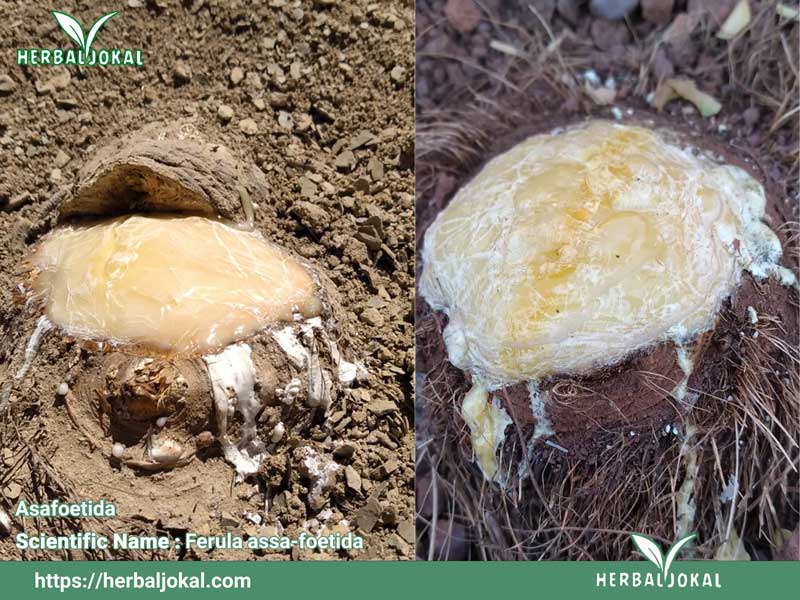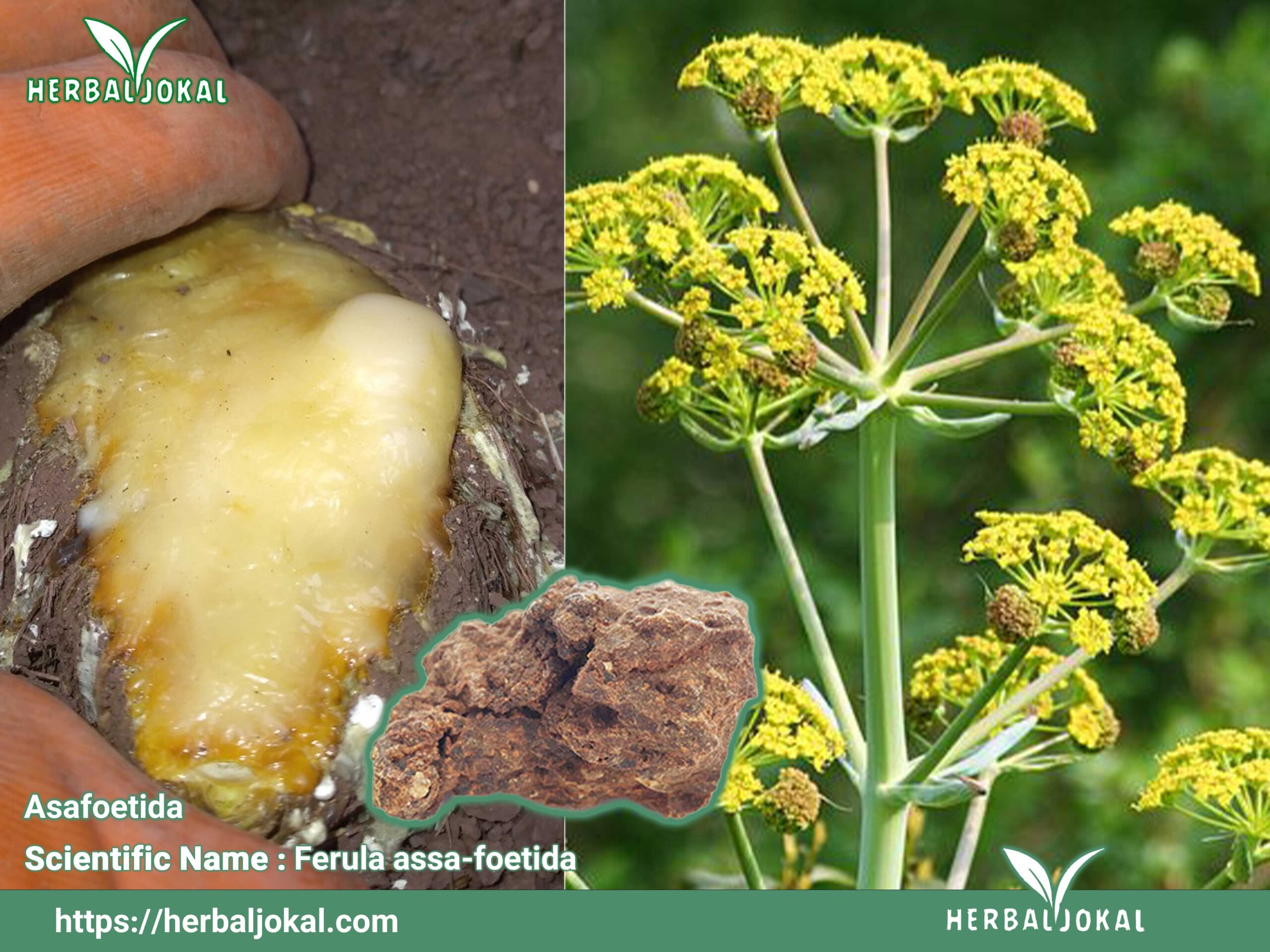Asafoetida – Ferula assa-foetida
Region:
Ferula assa-foetida is a species of Ferula native to northeastern Iran, Khorasan province. And its production is limited to the northeast of Iran, especially the area near Neishabur and Kashmar.
Ferula assa-foetida is a valuable and rare plant that is thousands of years old and has excellent medicinal properties. In addition to its medicinal use in Europe, this plant is also used in the perfumery and jewelry industry (to attach precious stones such as diamonds to jewelry) and is also used as a spice in food. This rare plant grows only in a few parts of the world, including Iran. Khorasan province is one of the parts of Iran that has this natural wealth. The best and most popular type of Ferula asafetida is the sweet Ferula assa-foetida, which is widely used in the pharmaceutical industry.
There are two types, bitter and sweet. The first type is spicy and bitter, and the second type is less bitter, which is known as the sweet type.
This plant in Iran is of much higher quality and purity than other species in terms of analytical compounds, and two substances, folic acid and disulfide, are the effective substances of this plant
In the country, we have four types of Ferula assa-foetida, which are divided into two types: bitter and sweet. Its bitter type is harvested in Kerman, Kohgiluyeh and Boyer Ahmad, Hormozgan and Fars. Ferula assa-foetida candy is produced in Khorasan. Our main production is in Neishabur, Koh Sorkh, Qochan and a part of the suburbs of Mashhad. These days, ranchers and farmers are harvesting Ferula assa-foetida. The harvesting season of Ferula assa-foetida is in the summer months. At the same time as this crop is harvested, it should also be cultivated and protected for the same year.
With plant phenology information, the duration of exploitation can be adjusted in such a way that optimal growth and development of plants are not harmed and optimal exploitation of pastures is also done. The plant studied in this review is Ferula assa-foetida. Ferula assa-foetida L. is one of the important medicinal plants of the Apiaceae family, which is herbaceous and perennial, and its height reaches up to 1.5 meters. It is basic and monocarbonate and it flowers in 6-10 years depending on the amount of rainfall and other climatic conditions.
Asafoetida, an oleo-gum-resin obtained from the exudates of Ferula assa-foetida L. roots, is traditionally used to treat various diseases including asthma, gastrointestinal disorders, and intestinal parasites. On the basis of Iranian traditional medicine, the main source of asafetida is F. assa-foetida roots. In folk medicine, however, different Ferula species have been used as sources of asafoetida. To identify the original asafoetida that possesses medicinal properties, we should compare metabolic profiles of different asafoetida sources which are commonly used for the oleo-gum-resin preparation.1H-NMR based metabolomics was used to obtain metabolic profiles of eight asafoetida oleo-gum-resin samples and forty-six samples of Ferula species roots from two main regions of Iran. The acquired data were analyzed using multivariate principal component analysis (PCA), partial least squares discriminant analysis (PLS-DA), and orthogonal projection to latent structures discriminant analysis (OPLS-DA) to identify the metabolic differences and similarities between the samples.
Asafoetida is usually produced from Ferula species of southern and eastern regions of Iran. A clear metabolic differentiation was evident between asafoetida oleo-gum- resin samples from the southern and those of the eastern Iran. The distinguished metabolites, umbelliprenin, farnesiferol B, farnesiferol C, samarcandin and galbanic acid are significantly found in southern samples. Only southern asafoetida is obtained from F. assa-foetida. Asafoetida from eastern region of Iran is obtained from other species of Ferula such as F. alliacea and its metabolic profile is far different from that of southern asafoetida.
The plant “Ferula assa-foetida” or the gold of the desert is one of these valuable products, which with more than 700 medicinal and therapeutic properties, is considered a valuable treasure in the heart of the desert, and we are proud to have this amazing plant in the best conditions and seasons. Plant, harvest and produce and supply to buyers.
Major benefits of purchasing from our company include:
- Offices in Oman, USA, and Iran
- US Bank account
- Product Packaging customization
- Quality Assurance, in compliance with industry standards
- Free product samples
- Mutiple shipment methods:
FOB, CFR, DAP, CIF.
Region:
Ferula assa-foetida is a species of Ferula native to northeastern Iran, Khorasan province. And its production is limited to the northeast of Iran, especially the area near Neishabur and Kashmar.
Ferula assa-foetida is a valuable and rare plant that is thousands of years old and has excellent medicinal properties. In addition to its medicinal use in Europe, this plant is also used in the perfumery and jewelry industry (to attach precious stones such as diamonds to jewelry) and is also used as a spice in food. This rare plant grows only in a few parts of the world, including Iran. Khorasan province is one of the parts of Iran that has this natural wealth. The best and most popular type of Ferula asafetida is the sweet Ferula assa-foetida, which is widely used in the pharmaceutical industry.
There are two types, bitter and sweet. The first type is spicy and bitter, and the second type is less bitter, which is known as the sweet type.
This plant in Iran is of much higher quality and purity than other species in terms of analytical compounds, and two substances, folic acid and disulfide, are the effective substances of this plant
In the country, we have four types of Ferula assa-foetida, which are divided into two types: bitter and sweet. Its bitter type is harvested in Kerman, Kohgiluyeh and Boyer Ahmad, Hormozgan and Fars. Ferula assa-foetida candy is produced in Khorasan. Our main production is in Neishabur, Koh Sorkh, Qochan and a part of the suburbs of Mashhad. These days, ranchers and farmers are harvesting Ferula assa-foetida. The harvesting season of Ferula assa-foetida is in the summer months. At the same time as this crop is harvested, it should also be cultivated and protected for the same year.
With plant phenology information, the duration of exploitation can be adjusted in such a way that optimal growth and development of plants are not harmed and optimal exploitation of pastures is also done. The plant studied in this review is Ferula assa-foetida. Ferula assa-foetida L. is one of the important medicinal plants of the Apiaceae family, which is herbaceous and perennial, and its height reaches up to 1.5 meters. It is basic and monocarbonate and it flowers in 6-10 years depending on the amount of rainfall and other climatic conditions.
Asafoetida, an oleo-gum-resin obtained from the exudates of Ferula assa-foetida L. roots, is traditionally used to treat various diseases including asthma, gastrointestinal disorders, and intestinal parasites. On the basis of Iranian traditional medicine, the main source of asafetida is F. assa-foetida roots. In folk medicine, however, different Ferula species have been used as sources of asafoetida. To identify the original asafoetida that possesses medicinal properties, we should compare metabolic profiles of different asafoetida sources which are commonly used for the oleo-gum-resin preparation.1H-NMR based metabolomics was used to obtain metabolic profiles of eight asafoetida oleo-gum-resin samples and forty-six samples of Ferula species roots from two main regions of Iran. The acquired data were analyzed using multivariate principal component analysis (PCA), partial least squares discriminant analysis (PLS-DA), and orthogonal projection to latent structures discriminant analysis (OPLS-DA) to identify the metabolic differences and similarities between the samples.
Asafoetida is usually produced from Ferula species of southern and eastern regions of Iran. A clear metabolic differentiation was evident between asafoetida oleo-gum- resin samples from the southern and those of the eastern Iran. The distinguished metabolites, umbelliprenin, farnesiferol B, farnesiferol C, samarcandin and galbanic acid are significantly found in southern samples. Only southern asafoetida is obtained from F. assa-foetida. Asafoetida from eastern region of Iran is obtained from other species of Ferula such as F. alliacea and its metabolic profile is far different from that of southern asafoetida.
The plant “Ferula assa-foetida” or the gold of the desert is one of these valuable products, which with more than 700 medicinal and therapeutic properties, is considered a valuable treasure in the heart of the desert, and we are proud to have this amazing plant in the best conditions and seasons. Plant, harvest and produce and supply to buyers.
Major benefits of purchasing from our company include:
- Offices in Oman, USA, and Iran
- US Bank account
- Product Packaging customization
- Quality Assurance, in compliance with industry standards
- Free product samples
- Mutiple shipment methods:
FOB, CFR, DAP, CIF.
MYTHS AND HISTORY
This herb is the major component in the famous Ayurvedic herbal formula Hingashtak, Sanskrit name is hing. In Persia this herb is so highly esteemed as a condiment, it is mixed with almost all their dishes. French gastronomers rub a little asafoetida on hot plates from which they eat beef steaks. The distinctive flavor of Worcestershire sauce is obtained by the addition of this gum. When used with discretion, it adds character to curries, stews, gravies, etc. Skilful manipulation has made asafoetida a useful ingredient in fine perfumes. It is still regarded a valuable medicinal in Europe, Near and far East. As a condiment, it is recommended only to the hearty and the brave. In magic and mythology, asafoetida is used to gain insight and to banish all negative energy, evil spirits and demons. It is used to invoke male gods, especially those of a phallic nature. One myth claims that asafoetida developed from the semen of a god of fertility when it soaked into the earth.
TRADITIONAL MEDICINAL USES
In Afghanistan hot water extract of the dried gum is taken orally for hysteria and whooping cough and to treat ulcers. Decoction of the plant is taken orally as a vermifuge in China. Hot water extract of the dried root is taken orally as an antispasmodic, a diuretic, a vermifuge and an analgesic in Egypt. Gum is chewed for amenorrhea in Malaysia and as antiepileptic in Morocco. Water extract of the resin in Nepal is taken orally as an anthelmintic and in Saudi Arabia dried gum is used medicinally for whooping cough, asthma, and bronchitis. In Brazil hot water extract of the dried leaf and stem is taken orally by males as an aphrodisiac and oleoresin powder, crushed with the fingertips, is used as a condiment. Fluid extract of the resin is taken orally as an emmenagogue, a stimulating expectorant, an anthelmintic, an aphrodisiac, and a stimulant to the brain and nerves and claimed to be a powerful antispasmodic in United State.
Asafoetida oleo-gum-resin (Anghouzeh, Khorakoma” and “Anguzakoma) is an old traditional phytomedicine that obtained from the roots of Ferula assa-foetida L. Traditionally, asafoetida has been used to treat dyspepsia, earache, insect repellent, wound healing, intestinal parasites, spasmodic and nervous disorders, asthma, epilepsy and microbial infections. Pharmacological and biological effects of asafoetida including cytotoxic activity against different cancer cell lines such as osteosarcoma cell line (HOS CRL), cervical cancer (HeLa) and colorectal cancer (SW620) , inhibitory effect of acetyl deacylasadisulfide realising on metastatic melanoma, pungent TRPA1 ion channel activator, relaxant effect on smooth muscles , hepatoprotective effect , anti-diabetic, antibacterial effects , pain relief , increase expression of antioxidant gene and neuroprotective properties have been studied. A large number of compounds have been reported from asafoetida, of which 31 compounds belong to the main class of natural compounds, sesquiterpene coumarins , and another major class of asafetida constituents are sulfides compounds.
Ferula asafoetida as traditional medicine
Asafoetida has been held in great esteem among indigenous medicines from the earliest times in India. It is reputed as a drug which expels wind from the stomach and counteracts any spasmodic disorders. It is also a nervine stimulant, digestive agent and a sedative. A dry Lampyris noctiluca without head is mixed with 200–300 mg of Ferula and taken mornings and evenings for gallstones and kidney stones and potassium nitrate is added to the mixture for old stones. Hot water extract of the dried resin is taken orally as an emmenagogue and hot water extract of the dried gum is taken orally as a carminative, an antispasmodic, and an expectorant in chronic bronchitis. Dried extract with Brassica Alba and rock salt is diluted with vinegar and taken orally as an abortifacient. Dried gum resin exudates are eaten to prevent guinea worm disease. Gum resin with salt and the bark juice of Moringa pterygosperma is used externally for stomachaches.
Plants have been a constant source of drugs and recently, much emphasis has been placed on finding novel therapeutic agents from medicinal plants. Today many people prefer to use medicinal plants rather than chemical drugs. Ferula asafoetida Linn: Asafoetida, the gum resin prized as a condiment in India and Iran, is obtained chiefly from plant Ferula asafoetida. The Latin name ferula means “carrier” or “vehicle”. Asa is a latinized form of Farsi asa “resin”, and Latin foetidus means “smelling, fetid”. In ancient Rome, asafoetida was stored in jars together with pine nuts, which were alone used to flavor delicate dishes. Another method is dissolving asafoetida in hot oil and adding the oil drop by drop to the food. If used with sufficient moderation, asafoetida enhances mushroom and vegetable dishes, but can also be used to give fried or barbecued meat a unique flavor. Ancient texts describe it as hingu and several centuries of its constant use have bestowed upon it the peculiarity of a tempting spice and trusted medicine. Hing is bitter and pungent in taste and light, sharp, unctuous and hot in effect. Ayurvedic texts have categorized hing as deepniya and sanjna-sthapaka (an appetiser and a restorer of consciousness). It is popular household remedies and its components are used for many prescriptions in traditional healing. Asafoetida is used as a flavoring agent and forms a constituent of many spice mixtures. It is used to flavor, curries, meatballs, dal and pickles. The whole plant is used as a fresh vegetable. The herb is also used as an antidote of opium. Given in the same quantity as opium ingested by the patient, it will counteract the effect of the drug.
CONCLUSIONS
Asafoetida is an oleo-gum-resin obtained from the exudates of the roots of the Iranian endemic medicinal plant, F. asafoetida. It is used widely all over the world as a flavoring spice in a variety of foods. Traditionally it is used for the treatment of various diseases, such as asthma, epilepsy, stomach-ache, flatulence, intestinal parasites, weak digestion and influenza. Recent studies including pharmacological and biological have also shown that asafoetida possess several activities, such as antioxidant, antiviral, antifungal, cancer chemopreventive, antidiabetic, antispasmodic, hypotensive and molluscicidal. Asafoetida has great medicinal importance.
Some believe that the leaves of the plant act as a weakened poison in the body and cause the elimination of germs from the body, and also make the body immune to diseases throughout the year, for this reason, it is widely used in pharmaceutical and food.
Source:
https://en.wikipedia.org/wiki/Ferula_assa-foetida
https://www.sciencedirect.com/science/article/abs/pii/S0367326X19315758?via%3Dihub
https://civilica.com/doc/527549/
https://www.ncbi.nlm.nih.gov/pmc/articles/PMC3459456/
https://pfaf.org/user/Plant.aspx?LatinName=Ferula+assa-foetida
https://ijfcs.ut.ac.ir/article_74315.html?lang=en
https://www.rjpharmacognosy.ir/article_53314.html





Reviews
There are no reviews yet.